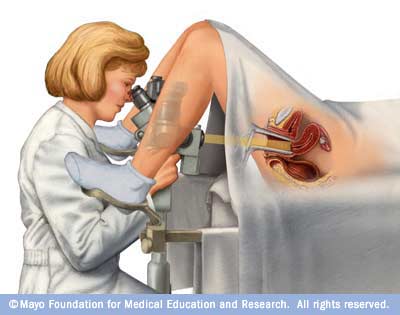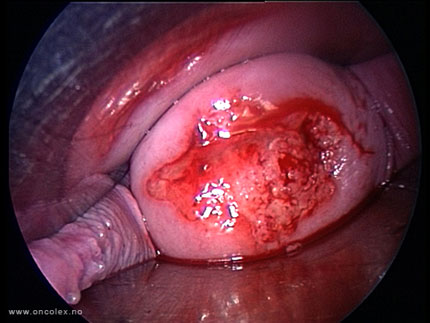Filming transvaginal surgery
September 16, 2008 § Leave a comment
I recently got a question via the contact form concerning the recording of a transvaginal procedure. As this may be interesting to others I post the question and my answer here. If you got any further advise or ideas for solutions to this difficult problem, please don’t hesitate to comment.
The question
I’m working with a company to develop multimedia-based training software for surgeons learning to repair vesicovaginal fistulas (VVF) in Africa and other developing countries. VVF is an obstetric complication resulting from obstructed labor and ischemia to pelvic soft tissue. As the body heals the soft tissue necrosis of the pelvis a hole can develop between the bladder and vagina rendering the women incontinent of urine for life (image credit). The problem is nearly exclusive to communities without emergency obstetrical care. Many, many women are in need of repair!
Now the video problem. Most surgeries are done transvaginally! We need good footage of an area the surgeon will have trouble seeing. The surgeon is closely involved with the project and would be willing to step out of the way for the camera. As a note and an added challenge, the procedure could be filmed in rural Africa.
My answer
First of all – this sounds like a very important project. I’ve read a few stories on the large amount of women with VVFs in Africa. Training surgeons for this procedure is a very important task indeed.
On to the video-problem. I have filmed a few transvaginal procedures, but never with a standard camcorder.
Colposcope
If possible, the best solution will be to get video through a colposcope, which will both provide an enlarged view of the area and sufficient light. The colposcope will have to be fitted with a camera that you can hook a recorder to. Here is a video of a cervical conization I’ve recorded through a colposcope. The magnification can be adjusted so you’ll see more of the vagina than in the video.

A colposcope used to examine the cervix
I’ve recently come across a colposcope with a built-in camera, that could be very interesting for your project.
It’s a Welch Allyn video colposcope with an integrated light source and camera, with a simple vertical stand included (photo credit). The unit has an s-video output, so all you need in addition to the scope is some kind of recording unit that can handle s-video. It’s quite expensive though.
As for the recording unit, I’ve got some good experience with a hard disc recorder from nNovia, which has analogue inputs (composite, s-video) and records to Quicktime- or AVI-files. Compact (book size) and not too expensive. You’ll need a monitor to view the picture from the scope. You can loop the signal to the monitor via the recorder, so you’re monitoring the recorded signal.
But this is also the catch with the Welch Allyn colposcope. It’s video only. There’s no viewfinder for the surgeon to look through. So if she’s going to operate using the colposcope, she’ll have to watch the monitor while operating. But it will of course be ideal for the video recording even if it’s not used during the entire procedure.
If your budget allows it, getting a colposcope like this would definitely be worth considering. It could easily be brought along to a rural location, as long as there is a power outlet.
Laparoscope
Another possibility is to use a standard laparoscope to film the procedure. I’ve filmed a vaginal trachelectomy using this method. It was impossible to get any footage while the surgeon was working, but I got some good pictures when I had the surgeon stop at important steps in the procedure and expose the area for me. Like the colposcope, the laparoscope also has its own highly focused light source. The only problem with this method is keeping the laparoscope still, as it has no stand, and you’ll have to hold it with your hands. This method is of course only available in a well-equipped hospital.
The video still below is captured through a laparoscope. You see the cervix and specula in the vagina.
Camcorder with light
If neither of these methods is an option, you’ll have to use a standard video camera. I that case I think the best solution would be to bring a separate light source with a high output, and a focusable beam. Small camera lights can be quite powerful these days, and would hopefully provide enough light. I have some experience with lights from PAG. They can be fitted with a 100 W halogen lamp and the beam can be focused to increase the light density. They also come with their own battery packs, so they don’t have to be fitted on the camera.
Separate light is important, as you will need to place the camera and light in different places or angles to the operating area. I would place the camera (fixed on a camera stand) pointing directly at the axis of the vagina. You can then use the camera light hand held and move it around until you get the best lighting of the operating area.
Except for a colposcope with a viewfinder (which the surgeon can see through while operating) the surgeon will need to step out of the way for the video footage. This means you will not be able to record what she’s doing while she’s doing it, but only before and after shots.




Leave a comment